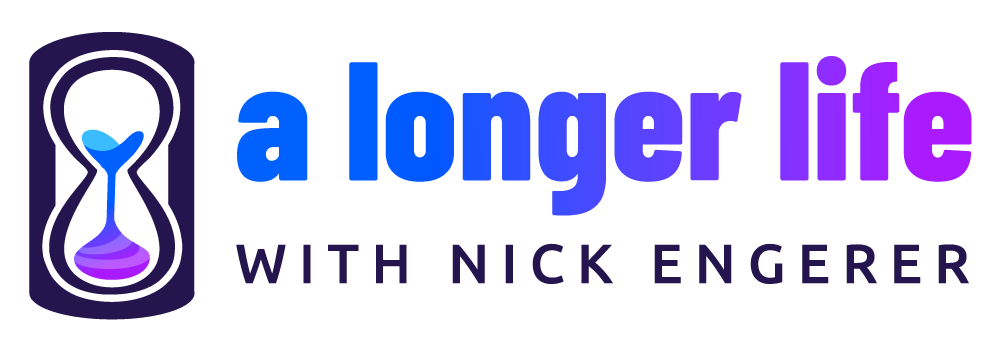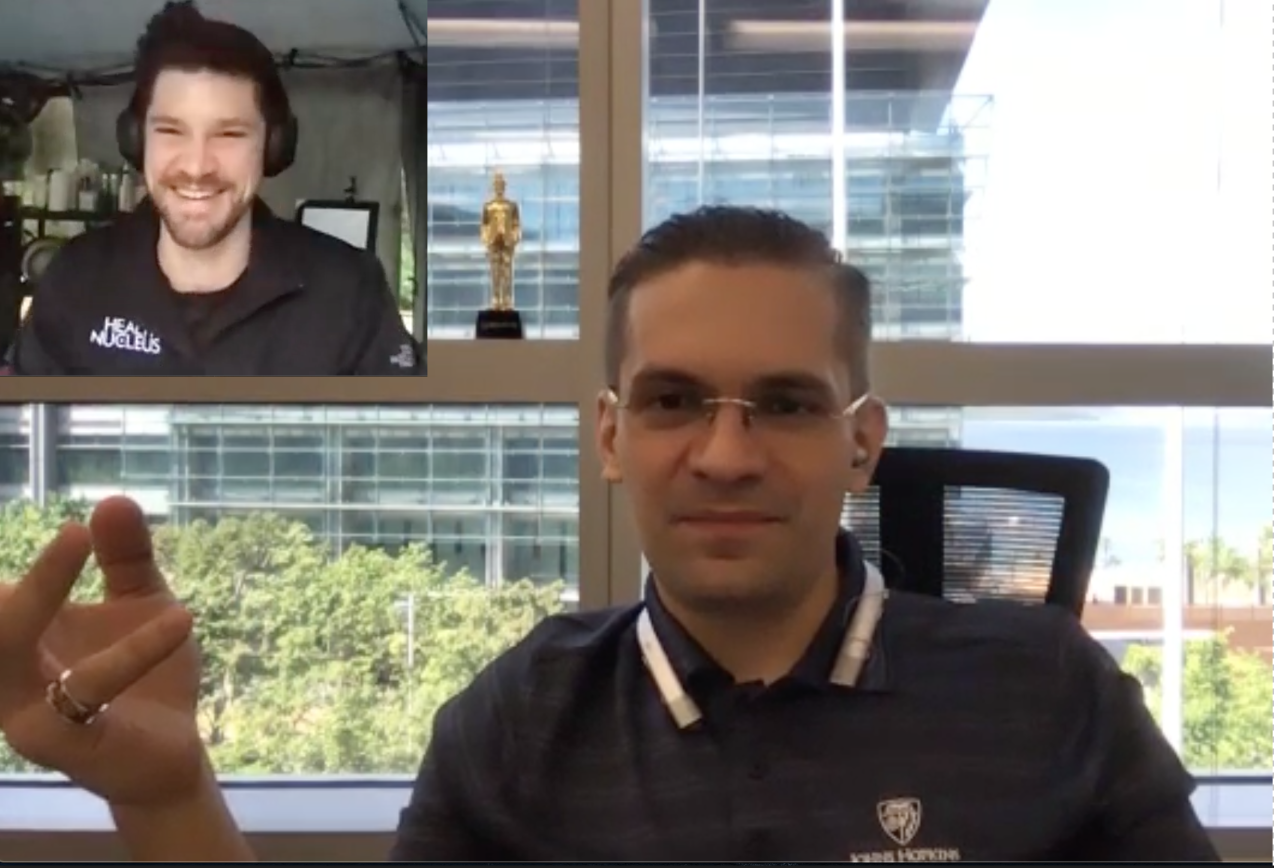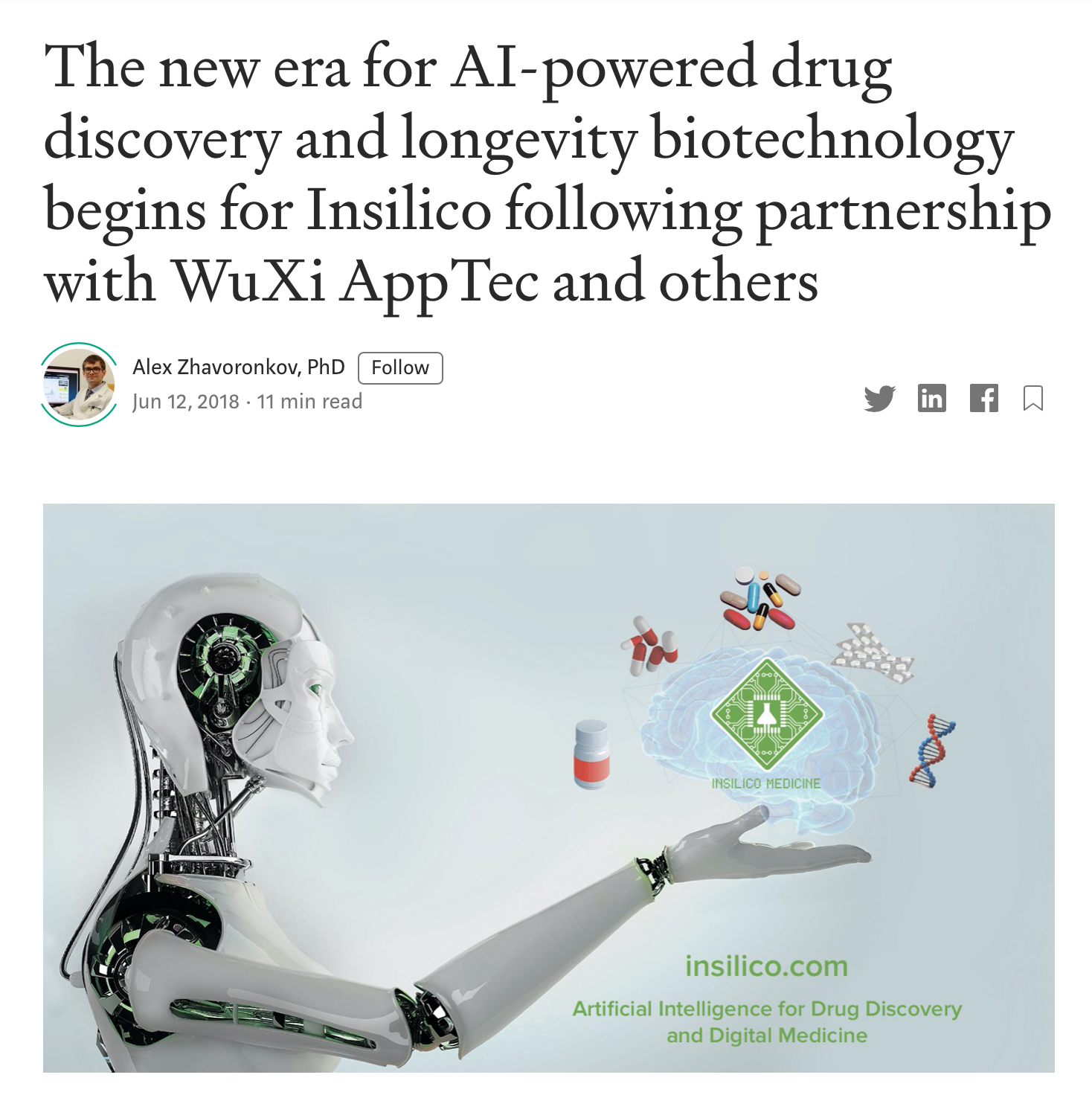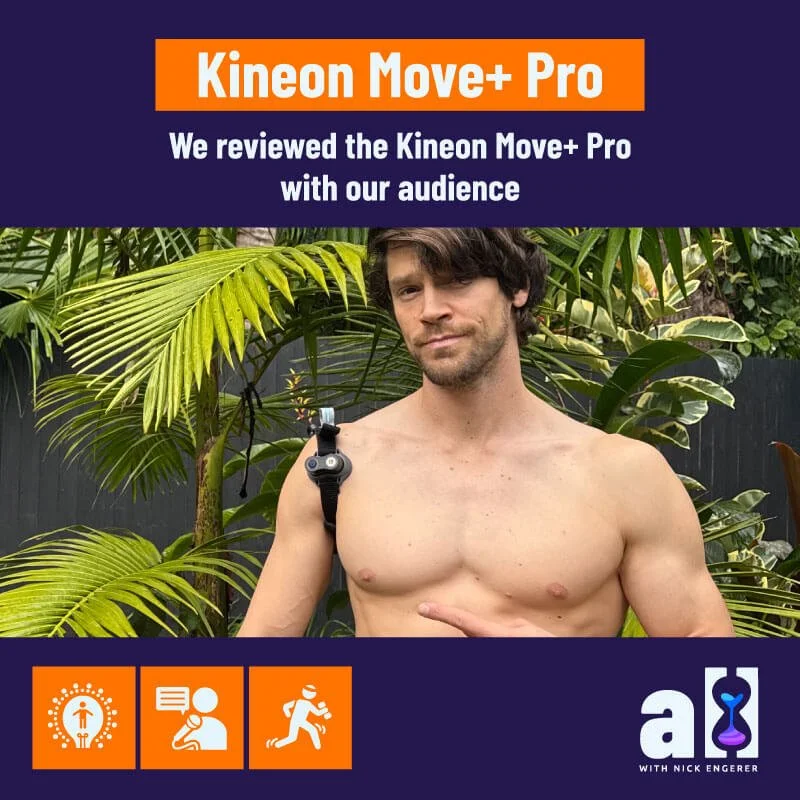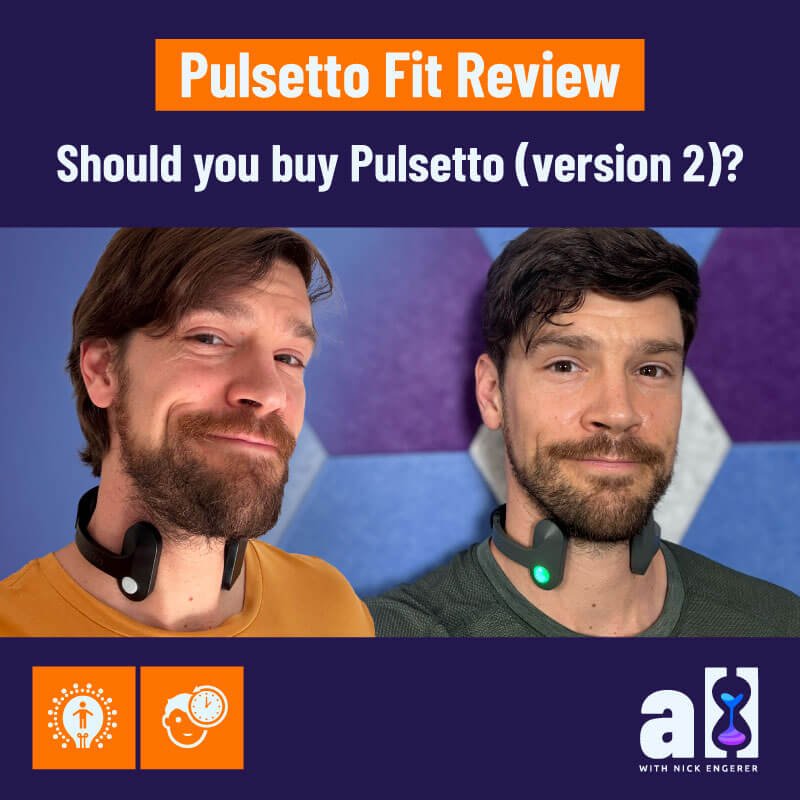Deep longevity, biological age and the future of Longevity as a service - an interview with Alex Zhavoronkov
How old am I? What a valuable question
Biological age testing is the start of a new longevity as a service industry, in this post we explore what that means, and evaluate the emerging ‘longevity economy.
In this post you’ll learn about:
The story behind ‘Deep Longevity’, an Insilico Medicine spin-out
Biological age clocks and the role of machine learning in creating them
Insight into what the launch of Deep Longevity means for the future of longevity medicine
Alex Zhavoronkov is perhaps best known for his role in founding Insilico Medicine in 2014 and as a prominent voice for longevity science globally.
And while Insilico has predominantly focused on drug discovery over the past six years, is has also generated valuable intellectual property in the ‘longevity’ sphere, including ‘AgingAI’, previously covered on the A Longer Life.
In recent news, a new company - Deep Longevity - was announced, followed in the last few days with news of an acquisition of the spin-out by Regent Pacific.
Whatever your take on the new venture, it has clearly already signalled strong expectations in future revenue growth & impact through this acquisition.
A Longer Life approached Alex to inquire about an interview to dive ‘Deep’ into the details on this new venture, prior to the announcement of this acquisition - which will now see Alex move into the fitting role of ‘Chief Longevity Officer’.
In this post, A Longer Life (ALL) sits down with Alex (AZ) to better understand his vision of the future of longevity, how it might benefit our community and what hard work remains to be done.
What is deep longevity?
LB: Let’s start with the new venture - Deep Longevity. It looks to have a very close relationship to Insilico Medicine. Could you provide us with a bit of background on this relationship?
Our zoom interview revealed Alex to be not only a friendly and charming individual - but also phenomenally knowledgeable on the subject of quantifying biological age.
AZ: Insilico Medicine started-up in 2014, at the dawn of the AI revolution. Our main focus area is, of course, target discovery. We discover novel molecular targets in a variety of diseases and also develop the capability to generate really good chemistry to validate those targets very quickly [via AI - Artificial Intelligence].
Many of the targets that we've discovered at Insilico are related to age related diseases. So, we are looking at age related diseases through a prism of longitudinal data and changes. [This includes] training AI to predict your biological age and to look for individual targets that might be implicated in disease.
ALL: Insilico has always had a strong inclination toward longevity technology, I’m sure that reflects your own vision. What changes have recently occurred at Insilico to lead to this new venture?
AZ: After we raised our last [investment] round from [series] B, we realized that the work at Insilico on aging and longevity - specifically in the biomarkers - might be consuming too much of our time. We had to refocus the company efforts on drug discovery to servicing the pharmaceutical companies and also building our own internal software systems for target discovery and small molecule chemistry generation.
ALL: It is very important for a new business to be laser focussed on the problems they are aiming to solve. So there was a growing mismatch between drug discovery and developing capabilities in longevity?
AZ: The aging research part was largely neglected over the past year … none of us wanted to happen because aging research is the most important cause out there to pursue. We decided to spin-out the aging research business inside a separate company.
Insilico will continue focusing on target discovery, generation of novel chemistry and prediction of clinical trials outcomes - servicing the pharmaceutical industry. That includes pursuing a pipeline of small molecules, therapeutic programs targeting cancer and fibrosis, but also age related diseases and senescence itself. Insilico will still have some assets that we are developing for aging.
ALL: It sounds like Deep Longevity could best be described as a spin-out of Insilico?
AZ: The aging biomarkers business has been spun off into Deep Longevity - a company which predicts your biological age using pretty much every data type that is predictive of biological age. And not only biological age, we're looking at many other endpoints. It's a standalone company, and I'm the CEO of both companies. That's that's kind of, you know, pulling Elon Musk and longevity here [joking].
Note: At the time of publishing, Alex has now been named as the “Chief Longevity Officer” at Deep Longevity and is no longer CEO.
ALL: I like your style
AZ: Yeah, as you can imagine, investors in both companies need to have a lot of clarity when that happens, right? You are running two separate businesses, you need to ensure that you spend adequate amount of time on both. You need to ensure that you prioritize your role within the two very distinct businesses... these are elite investors - elite biotech and elite AI investors.
ALL: It’s not easy ‘wearing two hats’ so to speak. I’ve been there before myself.
AgingAI is one of the foremost longevity tools created by Insilico.
Help us understand the technology transfer here - will the AgingAI and YoungAI tools effectively become part of Deep Longevity’s technology, in practical terms?
AZ: AgingAI is transferred to Insilico. Young AI is also transferred. We are taking this body of knowledge, of published papers, and patents - some already granted - to form a new company. This also includes a substantial number of scientists who were doing the original work transferring from Insilico to Deep Longevity, or are joining Deep Longevity from the outside. It is definitely built on a lot of prior effort.
 |
Partnership with human longevity inc
ALL: In addition to Insilico medicine, there is also a relationship between Deep Longevity and Human Longevity Inc, including investment. Tell us about that.
AZ: The partnership with Human Longevity Inc is a huge milestone for us. It is actually a milestone for the entire industry. To my knowledge this is the first partnership where an ‘aging clock’ company partners with a clinical organization. The Health Nucleus, Human Longevity Inc, those are the best doctors on the planet.
ALL: The blog has previously covered my own personal experience at the Health Nucleus, and interviewed their Medical Director Dr. Keegan Duchicela. There are some very high quality folks working there.
AZ: They are not only high quality folks, the people who come to Human Longevity Inc, they are doctors from Harvard, the Cleveland Clinic Mayo Clinic - and they have been exposed to very high end medicine before. But when they come to Human Longevity Inc - it still makes them go ‘wow!’”
These elite people, elite doctors at Human Longevity Inc - the way they analyze you is a depth of analysis which is much more granular, much deeper than even other elite clinics elsewhere.
ALL: Explain to us why Deep Longevity and HLI coming into collaboration is so important
AZ: The fact that HLI has started working on aging clocks is extremely important, extremely impressive. It actually made history in a way - it turns aging clocks into a clinical support tool that allow you to detect changes that are taking the the patient into the wrong direction… that there is room to for a correction, for an intervention, I that is a very powerful utility that was not available before.
Longevity as a service
ALL: It sounds like you may now be describing longevity-as-a-service.
AZ: These are the first steps to longevity medicine and longevity as a service. Traditional medicine looks at you within within the reference range for your age group… if you are coming to a doctor and when you are 60 or 70 they will compare you to the other people within the same age group from you know 60 to 80 or 60 to 70.
With longevity as a service, you are viewed in the context of your optimal performance... how far away are you from [when you were] 20 to 30? … How are you doing in terms of the context of the overall lifespan performance? So, longevity is a service the objective of this paradigm. I think I coined that term
ALL: So we’re paving new ground by even discussing it?
AZ: I wrote a blog about this when we when we raised our first round of funding from Juvenescence, and my thinking on the concept evolved over time. Longevity medicine and longevity as a service is applying cutting edge technology to bring the person back to the reference range of optimal performance and optimal well-being.
ALL: Optimal performance, optimal well-being. It sounds as if Longevity as a Service seems will have a close relationship with aging clocks?
AZ: So the idea is to reverse as many of those clocks as possible. Let's say 20 to 40 [years old], or that ideal range of 20 to 30, right? That's where humans are supposed to function at the best of their abilities. That's where evolution kind of wants us to ‘stop’… longevity as a service wants you to remain at that state for as long as possible - where you convert money into years of high performance life.
ALL: This, again, seems to suggest that aging clocks are likely to be a key metric in the longevity-as-a-service paradigm?
AZ: We have seen a major acceleration in longevity as a service as a goal in the industry, primarily in the advent of aging clocks. Aging clocks are the major innovation, I think, over the past 10 years
Aging clocks are ticking at different rates, and are driven by different properties. The fact that we have started studying them, and there is an acceleration in this area - that’s extremely promising, and is the big step towards longevity medicine and longevity as a service.
Biological aging clocks
ALL: This is the perfect opportunity to transition into some deeper discussion on aging clocks, as you are a certainly a global expert on this topic. Aging clocks are, most commonly referred to as ‘biological age tests’ are propagating very quickly, and becoming commercially available for the layperson.
If a layperson uses an aging clock to learn their biological age - what does that information actually mean?
AZ: It depends on the property or the specific clock and on how you design it. A given clock can tell you that you have a lower risk of dying for some specific cause or all causes.
ALL: So, of course, the science is much more complicated than the marketing! Could you help user better understand ‘design’ of aging clocks in the world of AI?
AZ: You have your training data set up in a way that that's very actionable and that it serves some purpose. So for example, if you're discovering novel targets, from data using AI, you want to ensure that the data you start with is target rich. So that's the philosophy we follow at Insilico.
ALL: ‘Target rich’ data, explain this concept in context in a bit more detail.
AZ: [It is] data economics, right? Some data types are more valuable than the others, but for aging clocks it’s not obvious. Some data types are very predictive of age, but they're not actionable. And some data types are very relevant to certain diseases, but they are not actionable. And some data types are actually actionable but not very predictive. So you really need to understand the data type and the combination of multiple data types in terms of the value of the intervention for disease or mortality..
ALL: We need predictive data on actionable insights related to aging - this is clearly quite challenging. How does Insilico/Deep Longevity find those valuable predictors?
AZ: We do a lot of work on feature engineering - [the data] that will go into the [AI] networks for training. You start with a certain number of parameters from a blood test, a transcriptome or a methylome, [which] can be mixed and matched because all of them are linked to age. Then you train your deep neural network to predict the age. Or, you can predict, for example, the age and the health status - the age and specific conditions.
ALL: So the feature engineering process helps to identify useful predictors, complete AI training and then predict biological age and health condition. With different feature sets, it is possible to predict varying age and health condition outcomes. Could you give us a more specific example?
AZ: There are multiple properties of each aging clock that you need to evaluate and analyze and use. Not every clock has the same properties - one of these properties is disease relevance.
For example, if the aging clock is predictive of disease status, and [that clock] predicts you to be older than your chronological age, this is predictive of that disease.
A second property of aging clocks would be on relevance to mortality - the risk of death from certain cause or from all causes. If a clock is predictive of mortality, there is a higher chance of dying or for any cause or a specific cause if you’re ‘older’, and vice versa.
The accuracy and representativeness of biological age clocks
ALL: Thank you for unpacking that. These two properties are quite important.
The relevance of the clock to disease state is very important for readers to understand. An ‘age’ from a clock is relevant to the disease, phenotype or mortality risk it was built to represent.
Keeping that in mind, how can we conceptually understand the accuracy of age predictions provided by aging clocks?
AZ: Every aging clock has a specific error rate. Within a specific range [of age], the clock may be accurate and inaccurate. [As an example] say plus minus five years. If that clock predicts to be three or four years younger, it might not actually mean much.. the prediction is just within that [accuracy] range.
All of this depends on how you design the clock and how you validate the clock, because every time you design the clock, you need to test these properties. This is usually done by cross validation - testing the clock on completely unrelated data sets.
ALL: So against the backdrop of the propagation of many different biological age tests - we need to carefully analyse an aging clock’s relevance and accuracy before applying the age prediction to an individual.
AZ: Exactly. So that's, that's, that's the exact point. And also, not it's not just the way it's built. It's also the way it's validated. Because very often when you build the clock, you don't have a clue where it's going to work.
ALL: Aging clocks take on many forms, not just the AI based one we have discussed so far. What about methylation clocks, an epigenetic approach? Recent coverage by EndPoints suggested your view was that these had not proven very accurate. Could you clarify?
AZ: That was actually not what I said.
ALL: Ok - consider this is an opportunity for you to set the record straight!
AZ: I must say on record that I consider Steve Horvath as a hero. He is really a pioneer. There is some kind of debate about who was the first to publish the methylation agent clock. But he did it as a single author. He published it in a perfect journal... He really goes into the annals of aging research as a mastermind of aging clocks... if you look at the stream of papers coming out of his lab, and also many labs over the world, all over the world - you can really clearly see that.
ALL: Thanks for clarifying, and making it clear that methylation clocks may offer a valuable tool in the efforts to quantify aging. Could you give us some examples of where the Horvath methylation clock is being used in research?
AZ: Researchers are trying it everywhere. Can you predict menopause? Can you predict the stage of Alzheimer's? Can you predict severity of the disease? There are hundreds of different attempts and successes, some of them might be very credible, some of them might not be super credible.
Especially when people claim that there is substantial age reversal using certain interventions. I saw those claims - they need to be validated multiple times. We also need to understand why it's happening to understand the cause and effect.
ALL: Pivoting back to aging clocks more generally, and the continual development of more of them - what can be done to ensure we have several, robust and useful clocks for quantifying aging?
AZ: When you're developing an aging clock, using any data type, it is of course important to think about the future - Where will it be applicable? How relevant is going to be? We really need to put the best practices into this.
Very often you're not gonna know where [the aging clock] is going to work. So you really need to validate on independent data sets. Ideally the best validation is always prospective and in the wild. So you really need to deploy those clocks in a clinical setting where people measure those clocks. They basically use those clocks over time, and then correlate those predictions to various outcomes.
Ageing interventions
ALL: Let’s again draw from your previous comments on Deep Longevity. In that same article - you said “you cannot intervene, if you cannot measure”.
We’ve discussed aging clocks in terms of their ability to ‘measure’, considering relevance, accuracy and how to engineer them. Let’s move onto ‘intervention’.
This concept clearly will resonate with many in the longevity community, where we’ve long talked about intervention, but have still been stuck in ‘exercise more, sleep well, eat less’. Could you give us an example of an intervention being tied to an aging clock?
AZ: Some clocks are very sensitive to interventions. So for example, using the composition of your gut flora we can guess your age. I was actually very surprised when this first worked. I think [Insilico] were the first ones to do that.
This clock is quite sensitive to intervention - you can see if any of the drugs that you're taking or any of the foods that you are eating are influencing the predicted age.
So for example, if you drink some alcohol and we know that alcohol kills bacteria - does it make you “younger” or does it make you “older”? This aging clock is very intervention relevant, because many interventions will affect the microbiome
Some aging clocks are sensitive to intervention, others are not sensitive to intervention at all. This makes understanding the intervention relevance extremely important. Sometimes the only way to test the intervention relevance is to really conduct a clinical study
ALL: So, with the right, well-designed clock, we can measure the impacts of intervention. This is precisely what the longevity community is interested in. This brings us full circle with respect to longevity as a service and the new venture Deep Longevity.
Tell us - what milestone does the launch of Deep Longevity represent for longevity as a service becoming reality?
AZ: From one perspective, we see a major acceleration of longevity-as-a-service as an industry, through the advent of aging clocks. That’s the major innovation over the past ten years - thanks to Steve Horvath and many others.
Once again - you cannot intervene if you cannot measure - Steve Horvath established one dimensionality to measure, we came up with more than twenty different dimensionalities. We are also aging on many different dimensionalities that we have not even thought about yet - we need to measure it at every level… the fact that we have started studying this, and that there is an acceleration in this area is extremely promising
From a second perspective, we now have interventions that are available like NAD boosters for example...senolytics are a very promising area… there are rapalogues… metformin....
Looking into the future of longevity technology
ALL: So we can measure, we are increasingly able to intervene…. Where does the launch of Deep Longevity fit in the longevity technology future?
We are standing before the inflection point. If you think about the internet or personal computer or the iPhone or Facebook, these exponential technologies that took over the world - with respect to PCs we are currently in the 60s, if you compare us to the internet, you are probably in the late 80s…”
ALL: You have the backing of some very smart investors, and a like-minded community who are in admiration of your work and supporting you from around the world.
Alex, we’ve used up all of your available time for today. Any closing thoughts?
AZ: Thanks so much. We have built a community of people who don’t prioritise anything else over longevity research. I recommend everyone do the same - this is the most important aspect of life to focus on - if we accelerate now, we will reap the benefits later.
ALL: You’ve dedicated your life to this effort, and that is evident in the impact you’ve had to date Alex, thank you.
—- End —-
Did you enjoy this interview with Alex?
You can hear more from him by following him on Twitter, or if science is your thing - review his Google Scholar profile.
Follow me on Twitter for the latest #Longevity news!
I post related #Longevity content to Instagram as well, follow me @nickengerer
FDA & TGA DISCLAIMER
This information is intended for educational purposes only and is not meant to substitute for medical care or to prescribe treatment for any specific health condition. These blog posts are not intended to diagnose, treat, cure or prevent any disease, and only may become actionable through consultation with a medical professional.

